When it comes to maintaining hygiene and sterility in process systems, few solutions match the reliability and performance of diaphragm valves. These specialized components are integral to industries like pharmaceuticals, food and beverage, and biotechnology, where cleanliness and precision are paramount. Their non-retention design ensures that no product or residue is trapped, mitigating contamination risks. Additionally, sanitary diaphragm valves are celebrated for their straightforward maintenance, reducing downtime and operational costs without compromising efficiency. With options like the pneumatic diaphragm valve and the versatile 3 way diaphragm valve, these valves provide superior control, adaptability, and compliance with strict industry standards.
Introduction Sanitary Diaphragm Valve
Sanitary diaphragm valves are essential in industries requiring stringent hygiene and sterility, such as pharmaceuticals, food processing, and biotechnology. Designed to eliminate contamination risks, their non-retention feature ensures that no residue accumulates in the system, while their ease of maintenance minimizes downtime. Diaphragm valve manufacturers continuously innovate to meet industry demands, offering advanced solutions like the air actuated diaphragm valve for enhanced automation and the diaphragm valve pneumatic actuator, which ensures precise control in critical operations. These valves exemplify reliability, efficiency, and compliance with rigorous standards.
Brief overview of sanitary diaphragm valves and their critical role in hygienic and sterile processes.
Sanitary diaphragm valves are precision-engineered to meet the rigorous demands of hygienic and sterile processes. Their smooth, crevice-free design eliminates fluid retention, reducing the risk of contamination and ensuring clean operations. These valves are crucial in industries such as food, pharmaceuticals, and biotechnology, where maintaining strict sanitation standards is essential. By providing reliable, contamination-free flow control, sanitary diaphragm valves play a vital role in safeguarding product integrity and process consistency.
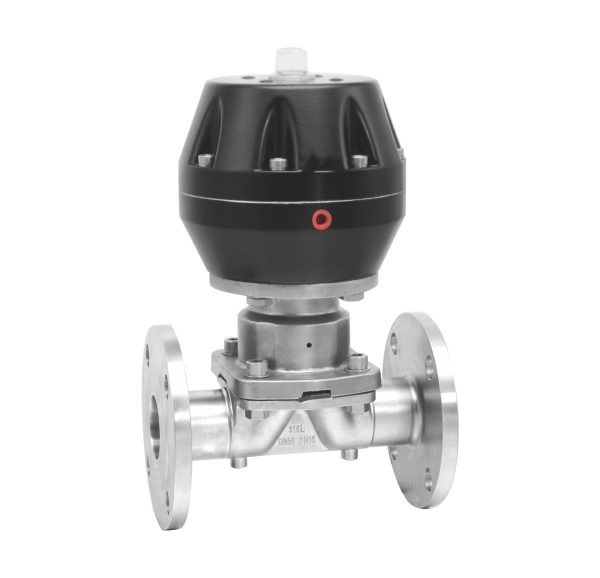
On the key advantages, such as:
Non-retention design
The non-retention design of sanitary diaphragm valves ensures that there are no crevices or dead spaces where fluids can accumulate, effectively preventing contamination. This feature is critical for maintaining hygiene in processes where cleanliness is paramount, such as in pharmaceutical, food, and biotechnology industries. By enabling a consistent and clean fluid flow, the non-retention design supports sterile operations, safeguarding product quality and adhering to strict sanitation standards.
Ease of maintenance
The ease of maintenance in sanitary diaphragm valves stems from their streamlined design, which allows for quick disassembly, cleaning, and reassembly. The absence of complex internal components minimizes wear and tear, while accessible parts reduce the need for specialized tools. This simplicity not only saves time but also reduces downtime, making these valves a reliable choice for industries requiring consistent hygiene and operational efficiency.
Key Features and Benefits of Diaphragm Valves
Diaphragm valves stand out for their non-retention design, which prevents product build-up and ensures contamination-free operation in hygienic applications. Their straightforward maintenance helps minimize system downtime, making them a cost-effective choice for industries like pharmaceuticals and food processing. With versatile configurations, these valves adapt seamlessly to diverse operational needs while maintaining compliance with strict hygiene and safety standards.
Non-Retention Design for Hygienic Operations
The non-retention design of diaphragm valves is engineered to eliminate areas where fluids can stagnate, ensuring a contamination-free environment. This feature is essential in industries like pharmaceuticals, food processing, and biotechnology, where maintaining strict hygienic conditions is critical. By promoting smooth fluid flow and preventing residue buildup, this design safeguards product integrity and upholds the cleanliness required for sensitive operations.
Explanation of how diaphragm valves prevent fluid retention.
Diaphragm valves prevent fluid retention through their innovative non-retention design, which eliminates crevices or pockets where residues could accumulate. This design ensures complete drainage, leaving no trace of fluid that could compromise cleanliness. By creating a smooth, streamlined flow path, these valves maintain sterility and reduce contamination risks, making them ideal for critical applications in industries like pharmaceuticals and food processing.
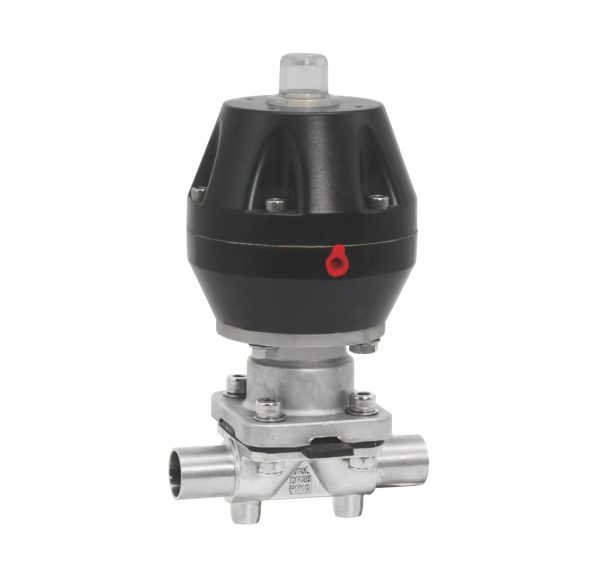
Benefits of this design in industries requiring high sanitary standards, such as food, beverage, and pharmaceuticals.
The non-retention design of diaphragm valves offers unparalleled benefits to industries with stringent sanitary requirements, such as food, beverage, and pharmaceuticals. By preventing fluid or residue build-up, this design ensures superior cleanliness and minimizes contamination risks. It supports compliance with rigorous hygiene standards while enhancing operational efficiency by reducing cleaning time and maintenance efforts, making it an essential choice for critical processes.
Simplified Maintenance in Sanitary Diaphragm Valves
Sanitary diaphragm valves are designed for simplified maintenance, offering quick access to components for cleaning and servicing. Their straightforward construction reduces mechanical complexity, minimizing wear and the need for frequent repairs. This efficiency not only lowers downtime but also enhances operational reliability, making them an ideal choice for industries that demand seamless performance and strict hygiene compliance.
Discuss the ease of disassembly and cleaning processes.
Sanitary diaphragm valves are designed with simplicity in mind, allowing for quick disassembly and easy cleaning. Their streamlined construction eliminates hard-to-reach areas, reducing downtime and effort during maintenance. This efficient process not only ensures optimal hygiene but also enhances reliability, making these valves a dependable choice for industries requiring strict sanitary standards.
Importance of quick maintenance in reducing downtime and ensuring operational efficiency.
Streamlined maintenance in sanitary diaphragm valves plays a crucial role in minimizing downtime and boosting operational efficiency. Quick disassembly and cleaning processes save valuable time, ensuring uninterrupted workflows in industries with demanding productivity goals. This efficiency not only reduces costs but also supports consistent compliance with high sanitary standards, making these valves an indispensable asset for time-sensitive operations.
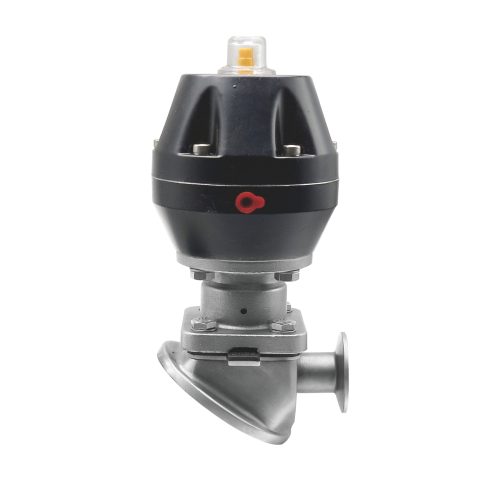
Advanced Options in Pneumatic Diaphragm Valve Technologies
Pneumatic diaphragm valve technologies have advanced with features like precision control and automation, ensuring superior accuracy in flow regulation. These innovations enhance operational efficiency by allowing real-time adjustments and reducing manual intervention while maintaining stringent hygiene standards. Such capabilities make them ideal for industries demanding high levels of cleanliness and process reliability.
Enhanced Automation with Pneumatically Operated Systems
Pneumatically operated diaphragm valve systems enhance automation by delivering precise, responsive control over fluid flow in industrial processes. Their advanced actuation mechanisms allow for seamless integration with automated systems, ensuring accurate performance and reducing manual intervention. This improved efficiency not only streamlines operations but also supports better process control, making them indispensable in industries that demand high levels of precision and reliability.
Overview of pneumatic diaphragm valves’ role in automated process control.
Pneumatic diaphragm valves are integral to automated process control, offering unmatched precision and efficiency in regulating flow. Their ability to operate seamlessly with automation systems ensures consistent performance and minimizes the need for manual oversight. By delivering reliable and accurate control, these valves support process optimization and ensure compliance with industry standards, making them a critical component in advanced automated operations.
Applications where pneumatic actuators provide precision and reliability.
Pneumatic actuators excel in applications demanding precision and reliability, such as pharmaceutical manufacturing, food processing, and chemical production. Their ability to deliver accurate control of flow, pressure, and other variables ensures consistent performance even under demanding conditions. These actuators are indispensable for industries that prioritize operational accuracy and dependability for maintaining high-quality standards and safety compliance.
Customization Potential in 3 Way Diaphragm Valve Solutions
The customization potential of 3-way diaphragm valve solutions allows them to be precisely tailored to specific operational requirements. These valves offer versatile flow configurations, making them ideal for complex systems that demand flexibility and precision. By adapting to unique application needs, they optimize process performance while maintaining the reliability and hygiene standards critical in demanding industrial environments.
Introduction to 3-way diaphragm valve configurations for complex flow requirements.
3-way diaphragm valve configurations offer exceptional versatility for managing complex flow requirements, making them ideal for diverse operational needs. Designed with precision, these valves enable seamless direction control and fluid mixing within a single system, reducing the need for multiple components. Their adaptability supports customized solutions, ensuring efficient and reliable performance in industries with intricate process demands.
Examples of how these valves address multi-directional flow in plumbing systems.
3-way diaphragm valves simplify multi-directional flow in plumbing systems by efficiently managing fluid routing within a single compact unit. For example, they can direct flow from one source to multiple outlets or merge flows from different inlets, streamlining complex operations like fluid mixing or distribution. This functionality reduces the need for additional components, cutting down on installation space and enhancing overall system efficiency while ensuring reliable, leak-proof performance.
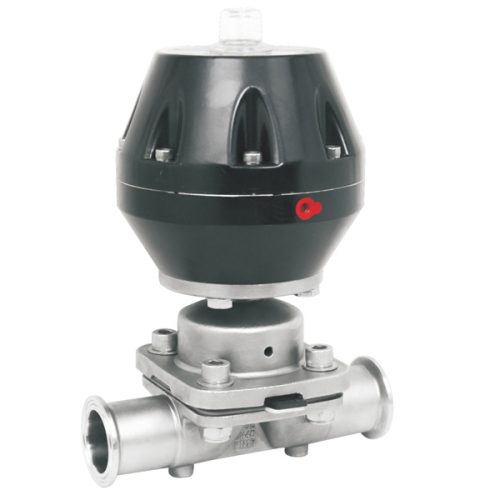
Industry Expertise and Standards by Diaphragm Valve Manufacturers
Leading diaphragm valve manufacturers bring decades of industry expertise, ensuring their products meet the highest standards for sanitary applications. By adhering to stringent quality control measures and global compliance requirements, they deliver valves designed for non-retention, easy maintenance, and superior hygiene. Their commitment to innovation drives the development of cutting-edge solutions that enhance performance and reliability, making them a trusted choice in industries requiring precision and cleanliness, such as pharmaceuticals and food production.
Manufacturing Excellence in Valve Production
Manufacturing excellence in valve production is built on stringent quality standards, precision engineering, and advanced technology. Diaphragm valve manufacturers leverage extensive industry expertise to produce reliable, high-performance solutions tailored to demanding applications. This commitment to craftsmanship ensures durable, efficient valves that meet the rigorous operational and hygiene requirements of diverse industries.
Insight into industry standards upheld by leading diaphragm valve manufacturers.
Leading diaphragm valve manufacturers uphold stringent industry standards through meticulous quality control and adherence to recognized compliance requirements. Their advanced manufacturing processes ensure valves deliver dependable performance and meet demanding application criteria. By prioritizing innovation, these manufacturers consistently develop solutions tailored to the evolving needs of precision-driven industries, solidifying their reputation for reliability and technical expertise.
Importance of certifications and rigorous quality control in valve manufacturing.
Certifications and rigorous quality control are the backbone of excellence in valve manufacturing, ensuring each product meets precise industry requirements. These measures not only verify the integrity and performance of valves but also enhance their durability and suitability for demanding applications. By maintaining strict production standards and continuous testing, manufacturers deliver reliable solutions that consistently perform under pressure, reinforcing their commitment to precision and trust.
Air Actuated Diaphragm Valve Innovations
Air actuated diaphragm valve innovations showcase advancements in design and functionality that elevate performance and reliability in industrial settings. These valves feature enhanced actuation mechanisms for precise flow control, improved durability, and seamless integration into automated systems. Such innovations ensure consistent performance, reduce maintenance needs, and meet the rigorous demands of modern industrial processes.
Exploration of air actuated diaphragm valves as a solution for reducing manual operation.
Air actuated diaphragm valves offer a highly efficient solution to minimize manual operation, leveraging automation to simplify fluid control processes. By using air pressure to operate the valve, these systems ensure precise and consistent performance with minimal human intervention. This not only reduces the labor required but also enhances operational accuracy, making them an ideal choice for industries focused on precision, efficiency, and streamlined workflows.
Key industries adopting such innovations for greater efficiency.
Industries such as pharmaceuticals, food and beverage, and chemical processing are rapidly adopting air actuated diaphragm valves to elevate efficiency in their operations. These valves streamline fluid control with precision, ensuring reliability in critical applications. By reducing manual intervention, they minimize errors and downtime, ultimately enhancing process consistency and productivity in demanding environments.
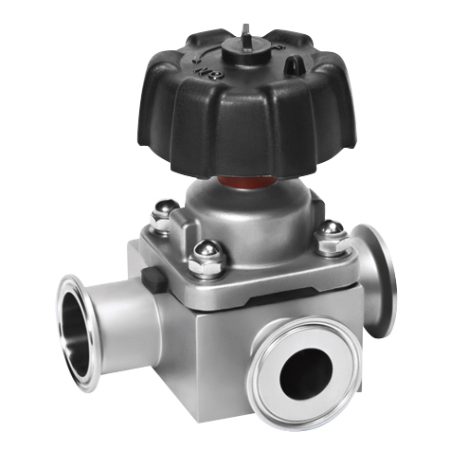
The Role of Diaphragm Valve Pneumatic Actuators
Diaphragm valve pneumatic actuators play a crucial role in achieving precise control, efficiency, and reliability within industrial processes. By leveraging advanced actuation technology, these components enable seamless operation, ensuring accurate flow regulation and responsive adjustments. Their robust design minimizes downtime and maintenance while maintaining the high standards required for performance-critical applications across various industries.
Explanation of pneumatic actuators’ impact on enhancing valve performance.
Pneumatic actuators significantly enhance the performance of diaphragm valves by delivering precise and efficient control over fluid processes. Their ability to convert air pressure into mechanical motion ensures consistent operation, reducing variability and the risk of errors. With their robust design and quick response times, pneumatic actuators provide reliable functionality, making them an essential component for industries requiring high levels of accuracy and operational efficiency.
Integration of actuators in process systems for better operational control.
The integration of pneumatic actuators into process systems elevates operational control by enabling precise and responsive valve management. These actuators optimize system performance through consistent regulation of fluid flow, reducing variability and improving overall process efficiency. Their capability to deliver fast and accurate adjustments ensures seamless operations, making them indispensable for industries demanding heightened precision and reliability.
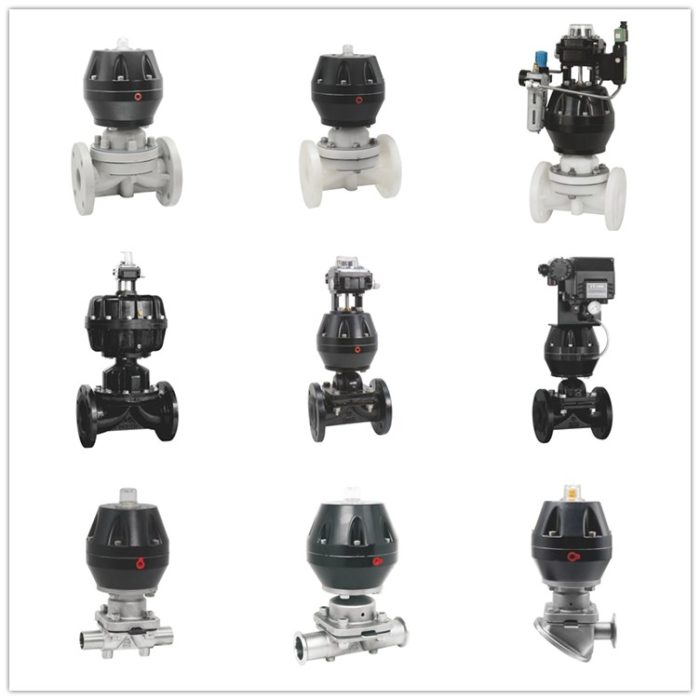
FAQ Sanitary Diaphragm Valve
1. What makes sanitary diaphragm valve ideal for non-retention in fluid systems?
Sanitary diaphragm valve are designed with a smooth, crevice-free internal structure that prevents fluid retention, minimizing the risk of contamination. This feature is particularly advantageous in industries such as pharmaceuticals and food processing, where hygiene and purity are critical. Unlike other valve types, diaphragm valves, including pneumatic diaphragm valve options, ensure a clean and efficient flow by eliminating areas where residues could accumulate.
2. How do sanitary diaphragm valve simplify maintenance?
Sanitary diaphragm valve are constructed for quick disassembly and cleaning, making maintenance straightforward and less time-consuming. Their minimal components reduce wear and tear, while options like a 3 way diaphragm valve provide added flexibility in directing flows without complicated setups. Pneumatic diaphragm valve configurations further ease operations through automated control, ensuring both reliability and reduced downtime during maintenance.
3. Why are diaphragm valves preferred in industries requiring high sanitation standards?
Diaphragm valves are the go-to choice in industries where sanitation is non-negotiable due to their sealing capabilities and non-retention design. Sanitary diaphragm valve stand out for their ability to prevent cross-contamination between processes. For added functionality, pneumatic diaphragm valves offer automated precision, and 3 way diaphragm valves allow for diverse flow patterns, making them versatile and efficient in meeting stringent sanitary regulations.
Conclusion Sanitary Diaphragm Valve
Sanitary diaphragm valves have set a high standard for industries prioritizing hygiene, efficiency, and ease of maintenance. With their non-retention design, these valves ensure contamination-free operations, making them indispensable in sectors like food processing and pharmaceuticals. Innovations like the air actuated diaphragm valve and the integration of diaphragm valve pneumatic actuators have further enhanced automation and reliability, supporting seamless workflows. Diaphragm valve manufacturers continue to refine their designs to meet evolving industry demands, offering solutions that combine superior performance with operational convenience.
